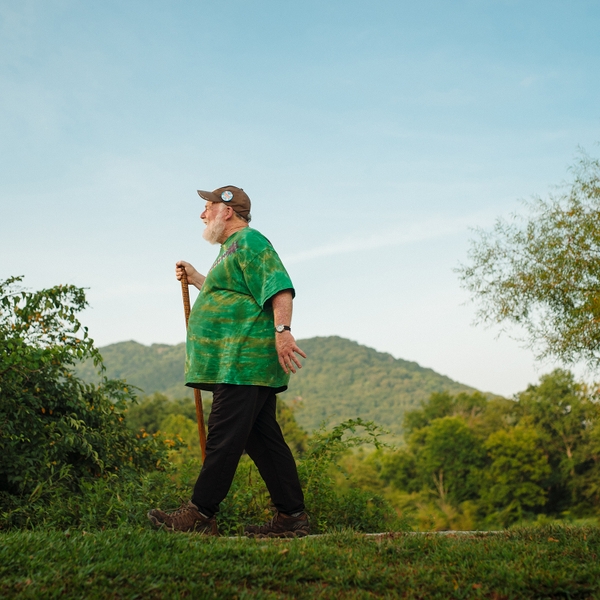Warren Doyle Knows More About the Appalachian Trail than Anyone. He Hates What It’s Become.
Doyle set a speed record on the AT 50 years ago, long before YouTubers and partying twentysomethings had flooded the iconic trail. Through his Appalachian Trail Institute, which he's run since 1989, he’s still trying to convert a new generation of thru-hikers to his personal philosophy of what the trail should be.
New perk: Easily find new routes and hidden gems, upcoming running events, and more near you. Your weekly Local Running Newsletter has everything you need to lace up! .
Class won’t start for another three hours, but Warren Doyle is already telling people how not to hike the Appalachian Trail. It’s a Monday morning in late March, and a torrent of rain has rushed from slate gray skies since dawn, shrouding the spring green of the Appalachians surrounding Mountain City, Tennessee, in mist. Three miles outside of town, Doyle’s driveway is a bog, water racing across in rivulets. He is oblivious to the downpour, even as rain drips down his ruddy face and through his white beard. Doyle, 73, scowls at the large pickup driven by the first of the five students to arrive at his Appalachian Trail Institute, a hiking school he has run since 1989. The truck is taking up too much room, he complains, forcing everyone else to park in the spongy yard. Before Doyle even greets his pupil, a retired soldier from Maine, he has an order: move.
“If you roll into a shelter on the AT like that,” Doyle says, referring to the lean-tos that dot the 2,198.4-mile footpath, “no one will like you very much.”
She glares, shrugs, and relents, climbing into her cab. After all, she has paid $300 to spend five days here, at the long-running quarterly seminar where Doyle talks about what he’s learned while hiking 40,000 miles on the country’s most historic trail over the past five decades.
Half a century ago, Doyle set a fastest known time on the AT: 66 days, a staggering speed even by the standard of today’s ultralight backpackers. He has lived and walked among the Appalachians, some of the world’s oldest mountains, ever since, finishing the entire trail 18 times. No one knows more about the Appalachian Trail; from memory, he can cite the exact mileage from the trail’s start in Georgia to the best creeks for bathing or the trickiest trail junctions. What’s more, no one has successfully led more people up the entire trail, either by guiding them in groups or teaching them in classes like this one. Doyle is the Appalachian Trail’s undisputed guru.
But within the trail’s sprawling modern community, he may be the most polarizing citizen, too. First connecting Georgia to Maine in 1937, the Appalachian Trail suggests such a complete escape from society that it is often described as a “green tunnel,” its hikers hugged on all sides by trees and dirt. When Doyle first hiked the trail in 1973, only had ever walked its length; in 2022 alone, nearly 1,500 finished. These days, it is so busy and popular that the green tunnel is often called the country’s longest bar crawl, as hikers push from one trail-town pub to the next. Doyle, however, is devoted to an antediluvian ideal of the place he considers holy—more specifically, to a time on it before Bill Bryson’s 1998 A Walk in the Woods and YouTube vlogs shot it into stratospheric popularity, or a nexus of hostels and shuttles and navigation apps made it easier.
In his classes, attended each year by a few dozen beginners, he does not lecture about gear, Leave No Trace practices, or new trail technology. Instead, he proselytizes on how that’s all nonsense: He has never filtered water, or dug a cathole for his waste, or packed out his toilet paper. He believes the outdoors has become a place for profit, not thought, a system he bitterly calls “the outdoor gear industry.” And he believes the Appalachian Trail Conservancy, the nonprofit that helps manage the trail, should be all but abolished. These grievances shape the core of his curriculum. Once a young idealist who found extreme personal freedom in the hollers of Appalachia, Doyle has aged into an extreme skeptic of modernity, not altogether removed from the resentful ideas that helped popularize Donald Trump or Yellowstone. He is half domestique, helping people achieve an ambitious dream, and half Bartleby, staring out and saying no.
These are the lessons of the first day, delivered in a series of three-hour lectures. When the marathon finally ends sometime after 9 P.M., another student—a mild-mannered 67-year-old former State Department employee with decades of hiking experience—walks outside and sighs. “What the fuck was that?” she says. Later that night, the students discuss leaving early. They expected advice about backpacks or rain jackets to buy and dehydrated foods to try, not grandiloquent philosophizing and political rants. It was as if they’d asked Phil Jackson to teach them how to dribble, only to be lectured about Zen and, say, his problems with celebrity.
Perhaps sensing the mood, Doyle offers his version of a mea culpa the next morning. “I wasn’t born this way. I didn’t come out of my mother’s womb ranting and raving,” he says, his voice rising toward a shout. “But I’m not ashamed of how I feel. It’s based on experience.”
Everyone stays, and I’m left to wonder: How did he become so bitter about his love?






